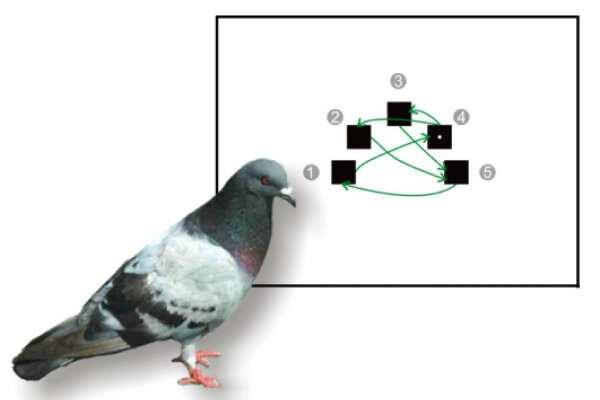2012-02-12

Most of our behavior is composed of action sequences, like driving a car, brushing your teeth or human language. The pigeon is a commonly used model organism to investigate the principles of how sequences are learned and executed. However, so far virtually nothing was known about the underlying neural circuits in the pigeon brain.
In a recent study scientists of the IKN identified two structures that play a role for the execution of a learned sequence in the pigeon.
The scientist applied a so called serial reaction time task (SRTT). This kind of task requires subjects to respond quickly to a stimulus that appears at five different locations in a fixed sequence. In their study the scientists transiently inactivated different brain areas of the pigeons during the execution of this sequential task. Results show that two regions play a central role. On the one hand, the nidopallium caudolaterale (NCL), that is considered the avian equivalent to mammalian prefrontal cortex. On the other hand, the nidopallium intermedium medialis pars laterale (NIMl). This area is comparable in some characteristics to a nucleus of the neural system that generates song in song birds. Hence, this study is the first to identify components of a neural system for the execution of sequential behavior in the pigeon.
Link: http://www.sciencedirect.com/science/article/pii/S0166432812001118

Most of our behavior is composed of action sequences, like driving a car, brushing your teeth or human language. The pigeon is a commonly used model organism to investigate the principles of how sequences are learned and executed. However, so far virtually nothing was known about the underlying neural circuits in the pigeon brain.
In a recent study scientists of the IKN identified two structures that play a role for the execution of a learned sequence in the pigeon.
The scientist applied a so called serial reaction time task (SRTT). This kind of task requires subjects to respond quickly to a stimulus that appears at five different locations in a fixed sequence. In their study the scientists transiently inactivated different brain areas of the pigeons during the execution of this sequential task. Results show that two regions play a central role. On the one hand, the nidopallium caudolaterale (NCL), that is considered the avian equivalent to mammalian prefrontal cortex. On the other hand, the nidopallium intermedium medialis pars laterale (NIMl). This area is comparable in some characteristics to a nucleus of the neural system that generates song in song birds. Hence, this study is the first to identify components of a neural system for the execution of sequential behavior in the pigeon.
Link: http://www.sciencedirect.com/science/article/pii/S0166432812001118